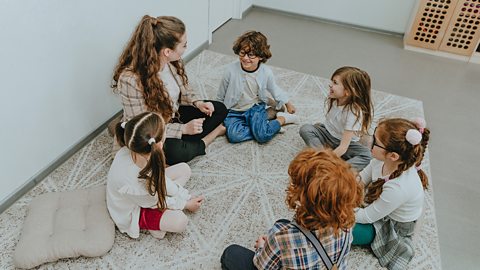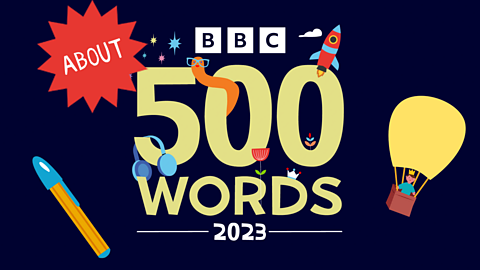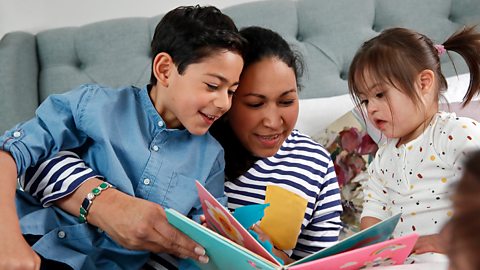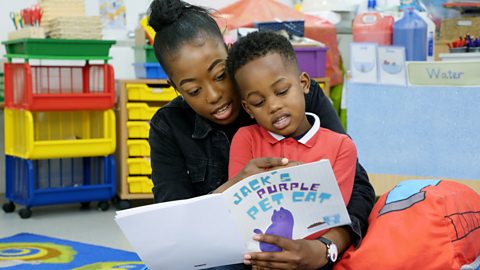500 Words, the UKβs largest childrenβs writing competition, is now open! Submit before 9pm on Friday 8 November. This year, age ranges for the two categories are 5β7 and 8-11.
Using 500 Words could be a great way to boost language development and creativity among younger children; stories are not marked on punctuation, spelling, or grammar. This could be the perfect opportunity to start building story writing skills for your five-year-old.
There are fantastic prizes up for grabs, such as books for children and their school, and the final will be held at Buckingham Palace in February 2025.
Although the competition encourages stories from children aged as young as five, it could still be quite challenging for your little ones to write a story.
The story must come from your child but can be typed up by an adult. Thatβs why we have put together some top tips below to encourage creative storytelling.

"The ΒιΆΉΤΌΕΔβs 500 words competition is an exciting way for young children to develop their creative writing skills and nurture their imaginations with help both from teachers and β importantly β through their parents at home," says Jennifer Howze, Editorial Director at .
500 Words is a fantastic opportunity for parents to spend time with their children, away from screens and encourage them to think in unusual ways.
If you have a child that would like to enter their story but needs guidance, here are our top tips for how you can help them submit their story this autumn, put together with help from primary school teacher Simon Hunt.
1. Act it out
Ask your child to act out their story and you can write it down for them. As they act out their story, make sure you are asking them questions to expand on the story; who is the main character? Where is the story set?
You can do this as a one-to-one activity or in a group.
Listen to your childβs story or take down notes and write it up for them. You could note down what happens on a tablet or smart phone and then make sure it is readable after. Remember, it must be 500 words or fewer.
2. Draw pictures
Time to show off their imagination!
You can explore your childβs imagination by getting them to draw pictures. Ask them a question based on a premise for a story and see what they draw.
They can draw who their main character is, the setting, maybe even a villain. From this, you can then explain that there must be a beginning, middle and end to their story and help them piece the puzzle together.
Why not take the chance to boost descriptive words and ask them to tell you words to describe the pictures?

3. Explore the world around them
If your child is struggling to take off with their idea, take inspiration from what is already available. Read their favourite stories with them and ask them what bits they like and donβt like about it. Itβs a great chance to build stories based around their interests.
If you can, take them to different places like parks, museums, or a zoo, and encourage them to observe, imagine and create stories inspired by what they see. Discuss their thoughts and feelings and help them write these experiences into exciting tales.
4. Try constructive tablet time
Itβs time to put childrenβs time on tablets and smart phones to good use. Younger children may struggle to get their ideas down on paper, so they could begin writing their story by dictating their words into a tablet. This is a great way for them to see how tough words are spelt and will give them more confidence to use more challenging words and expand their vocabulary.
If they need help, read the words back to them.

5. Turn a storyβ¦into a song!
Create a song together that can be turned into a story. This is a great opportunity to use some descriptive words and can make the process of writing a story more active and engaging.
Why not try changing the words to a popular nursery rhyme if youβre struggling with a tune?
Use rhymes or poems to develop the story β it doesnβt matter if your singing isnβt up to scratch, itβs the story that counts!
6. Family story circle
You can gather in a larger group to help your little one find inspiration for their story. Get together with siblings, cousins, or school friends, and take turns sharing short stories.
Take the lead and share your story first so the children know what to expect from the activity.
Itβs not just quality time spent together, but the children can inspire each other to use different elements in their stories.
Although the competitionβs age ranges are years 5-11, there is no reason children aged 4 and under canβt get involved in the magic of creating stories. You could save their stories until they reach the right age to enter the competition.

7. Puppet time
Who doesnβt love puppets?
Puppets can be great for telling stories to younger children and can be much more engaging and interactive for them. You can use different puppets to help them visualise all the characters and use different voices to create a dynamic experience.
You donβt have to buy expensive puppets, homemade sock puppets will do just fine and can be made from materials found in the home.
You and your children can act out their tales and then write the story down together. This approach adds a playful, imaginative dimension to their storytelling.






